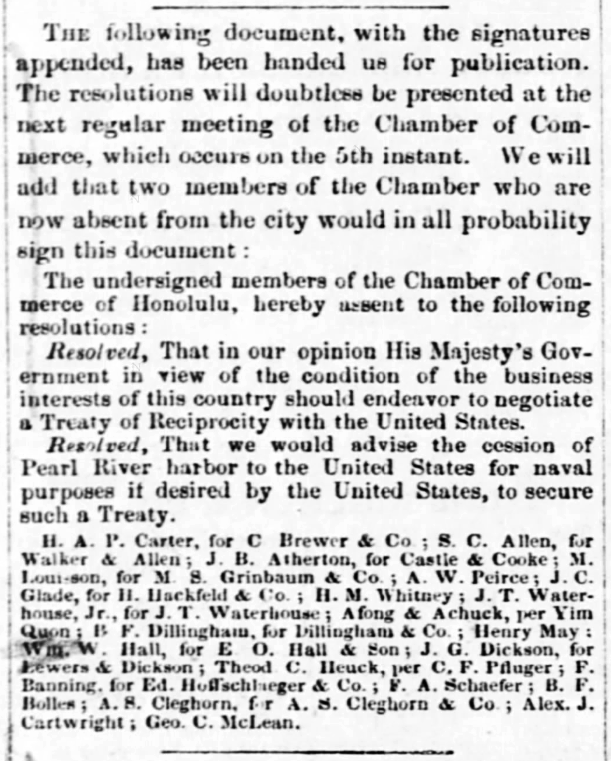A few weeks earlier that month, this appeared in the PCA and surely was one of the reasons for the meeting.
The following document, with the signatures appended, has been handed us for publication. The resolutions will doubtless be presented at the next regular meeting of the Chamber of Commerce, which occurs on the 5th instant. We will add that two members of the Chamber who are now absent from the city would in all probability sign this document:
The undersigned members of the Chamber of Commerce of Honolulu, hereby assent to the following resolutions:
Resolved, That in our opinion His Majesty’s Government in view of the condition of the business interests of this country should endeavor to negotiate a Treaty of Reciprocity with the United States.
Resolved, That we would advise the cession of Pearl River harbor [Pearl Harbor] to the United States for naval purposes it desired by the United States, to secure such a Treaty.
H. A. P. Carter, for C. Brewer & Co.; S. C. Allen, for Walker & Allen; J. B. Atherton, for Castle & Cooke; M. Louisson, for M. S. Grinbaum & Co.; A. W. Peirce; J. C. Glade, for H. Hackfeld & Co.; H. M. Whitney; J. T. Waterhouse, Jr., for J. T. Waterhouse; Afong & Achuck, per Yim Quon; B. F. Dillingham, for Dillingham & Co.; Henry May; William W. Hall, for E. O. Hall & Son; J. G. Dickson, for Lewers & Dickson; Theodore C. Heuck, per C. F. Pfluger; F. Banning, for Edward Hoffschlaeger & Co.; F. A. Shaefer; B. F. Bolles; A. S. Cleghorn, for A. S. Cleghorn & Co.; Alexander J. Cartwright; George C. McLean.
(PCA, 3/1/1873, p. 2)




